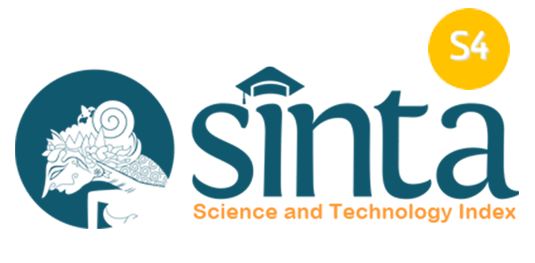Stock Market Co-Integration Evidence from Indonesia, Malaysia, South Korea, Hong Kong, and The US Stock Market
Abstract
ABSTRACT
Financial liberalization conducted by many Asian countries has initiated significant growth in financial transactions and flow of funds in International financial markets hence increases the linkage between emerging stock markets with developed stock markets. The 2008 crash in the US stock markets has been the cause of the downslide in many stock markets in Asia along with outside Asia. However, this linkage indicates that international diversification cannot be implemented among these countries. This research aims to investigate the dynamic linkage of stock markets in Indonesia, Malaysia, South Korea, Hong Kong, and The US by applying the co-integration approach during the period of crisis and after the global economy crisis of 2008. Empirical result shows that Indonesia, Malaysia, South Korea, Hong Kong, and the US stock markets are co-integrated during and after the crisis. This empirical finding has important implications for the management of an international portfolio in the establishment of a stock portfolio in the Indonesian, Malaysian, South Korean, Hong Kong and the US stock markets. The result of this study shows that investors cannot get benefit if doing international diversification among the five stock exchanges. However, in the short term it is possible to obtain an excess return.
ABSTRAK
Liberalisasi keuangan yang dilakukan oleh banyak Negara Asia telah memprakarsai pertumbuhan yang signifikan dalam transaksi keuangan dan aliran dana di pasar keuangan internasional sehingga meningkatkan hubungan antara pasar saham berkembang dengan pasar saham maju. ‘Kecelakaan’ 2008 di pasar saham AS telah menjadi penyebab kemerosotan di banyak pasar saham di Asia bersama dengan di luar Asia. Namun, hubungan ini menunjukkan bahwa diversifikasi internasional tidak dapat diterapkan di antara negara-negara ini. Penelitian ini bertujuan untuk menyelidiki hubungan dinamis pasar saham di Indonesia, Malaysia, Korea Selatan, Hong Kong, dan Amerika Serikat dengan menerapkan pendekatan ko-integrasi selama periode krisis dan setelah krisis ekonomi global tahun 2008. Hasil empiris menunjukkan bahwa Indonesia, Malaysia, Korea Selatan, Hong Kong, dan pasar saham AS saling terintegrasi selama dan setelah krisis. Temuan empiris ini memiliki implikasi penting bagi pengelolaan portofolio internasional dalam pembentukan portofolio saham di pasar saham Indonesia, Malaysia, Korea Selatan, Hong Kong, dan AS. Hasil penelitian ini menunjukkan bahwa investor tidak dapat memperoleh manfaat jika melakukan diversifikasi internasional di antara lima bursa efek. Namun, dalam jangka pendek dimungkinkan untuk mendapatkan pengembalian yang berlebih.
Full Text:
PDF (Bahasa Indonesia)References
Aityan,S.K., Ivanov – Schitz, A.K., Izotov, SS.(2010) Time – shift asymmetric correlation analysis of global stock market. J. International Finance. Mark Institute Money Vol. 20 No. 5, pp 590-605.
Bäle, I. (2005) Volatillity spillover effects in European equity markets. J. Finance. Vol. 40.pp. 373- 401
Chakrabarti, G. (2011). Financial crisis and the changing nature of volatility contagion in the Asia – Pacific region. J. Asset Management. Vol. 12 No.3 172 -184
Choudhury, T. (1994). Stochastic trend in stock prices: Evidence from latin American markets. Journal of Macroeconomics 19, pp 285-304
Christensen, Ben J., Morten. Nielsen (2003), Asymtotic Normality of Narrow – Band Least Squares in the Stationary Fractional co-integration Model and Volatility Forecasting, University of Aarhus
Click, R.W.& Plummer, M.G. (2005) Stock Market Integration in ASEAN after Asian Financial Crisis. Journal of Asian Economic. Vol.16 (1) pp.5-28
Engle, R., and C. J. W. Granger, (1987) Co-integration and Error – Correction: Representation, Estimation, and Testing, Econometrica (March), pp.251 – 276
Forbes, K., Chinn, M, (2004). A decomposition of global linkaages in financial markets over time. J. Economy Statistic. Vol 86.No. 3. Pp. 705 – 722
Gilmore, C.G., McManus, G. M.,(2002) International portfolio diversification: US and Central European equity markets. Emerging Market Review. 3(1), 69-83.
Granger, C.W.J. (1981) Some properties of time series data and their use in econometric model specification, Journal of Econometrics 16, pp 121- 130
Granger, C.W. J. & Joyeux, R. (1980), An introduction to long memory series with Attractors, Oxford Bulletin of Economics and Statistics, 53, pp.11-26
Hardouvelis, G.A.Malliaropulos, D., Priestley,R.,2006. EMU and European stock market integration, J. Bus 79 (1), 365 – 392
Harvey, C.R.,1993. Portfolio enhancement using emerging markets and conditioning information. In: Claessen. S.,Gooptu., S.(Eds).Portfolio investment in developing Countries The World Bank Discussion Series. The World Bank. Washington, DC
Herwany, A. & Febrian, E. (2003) Global stock price linkages around the US financial crisis : evidence from Indonesia. Global Journal of Business Research. Vol. 7. No. 5. Pp.35 -45
Johnson, R., Soenen,L. 2002 Asian Economic Integration and stock market co-movement. J.Finance .Res.25. (1) , pp. 85 – 100.
Narayan, P.K Mishra. S., Narayan, S.,2011. Do market capitalization and stock traded converge? New global evidence. J. Bank Finance. 35 (10). pp. 2711-2781.
Narayan, S., Sriananthakumar, S.,Islam, S.Z.,2014. Stock market integration of emerging Asian economies: patterns and causes. Econ. Model.39. pp.19-31.
Quinn,.D.P.,Voth. H.J.,2008. A Century of global equity market correlations. Am. Econ. Rev. Financial Analysis. Vol 13 (3) 245 -263
Schahmurove, Y.2006. Dynamics Linkages among the stock exchange of the Emerging Market Tigers of The Twenty First Century. International Journal of Business, 11(3): 319-344
Sharma, A. & Thaker,K. 2015. Market efficiency in developed and emerging markets. Afro Asian J. Financ. Acounting. Vol.5 No.4.pp.311-333
Singh,G.,Loh, I.,2010. Wavelet perspective of time – varying dynamic of Chinese, Indian and other major markets . Invest. Manag. Finance. Innov. 7 (2). Pp 100 – 107.
Umutlu, M., Akdeniz, L., Altay – Salih, A., 2010. The Degree of Financial liberalization and aggregated stock return volatilityin emerging markets. J. Bank Finance 34 (3), pp. 509-521.
Wälti, S. 2011. Stock Market synchronization and market integration. J. International Money and Finance. 30 (1), pp. 96- 110
DOI: https://doi.org/10.29313/performa.v0i0.3916
Refbacks
- There are currently no refbacks.
Copyright (c) 2019 Jurnal Manajemen dan Bisnis: Performa
Jurnal manajemen dan bisnis (Performa) diindeks oleh:
Alamat Redaksi:
Jl. Tamansari 1, Bandung 40116, Jawa Barat, (022) 4203368 pes. 210, (022) 4264064. jmb.performa@gmail.com / jmb.performa@unisba.ac.id

This work is licensed under a Creative Commons Attribution-NonCommercial-ShareAlike 4.0 International License. ISSN 1829-8680 | E-ISSN 2599-0039

_(2).jpg)







